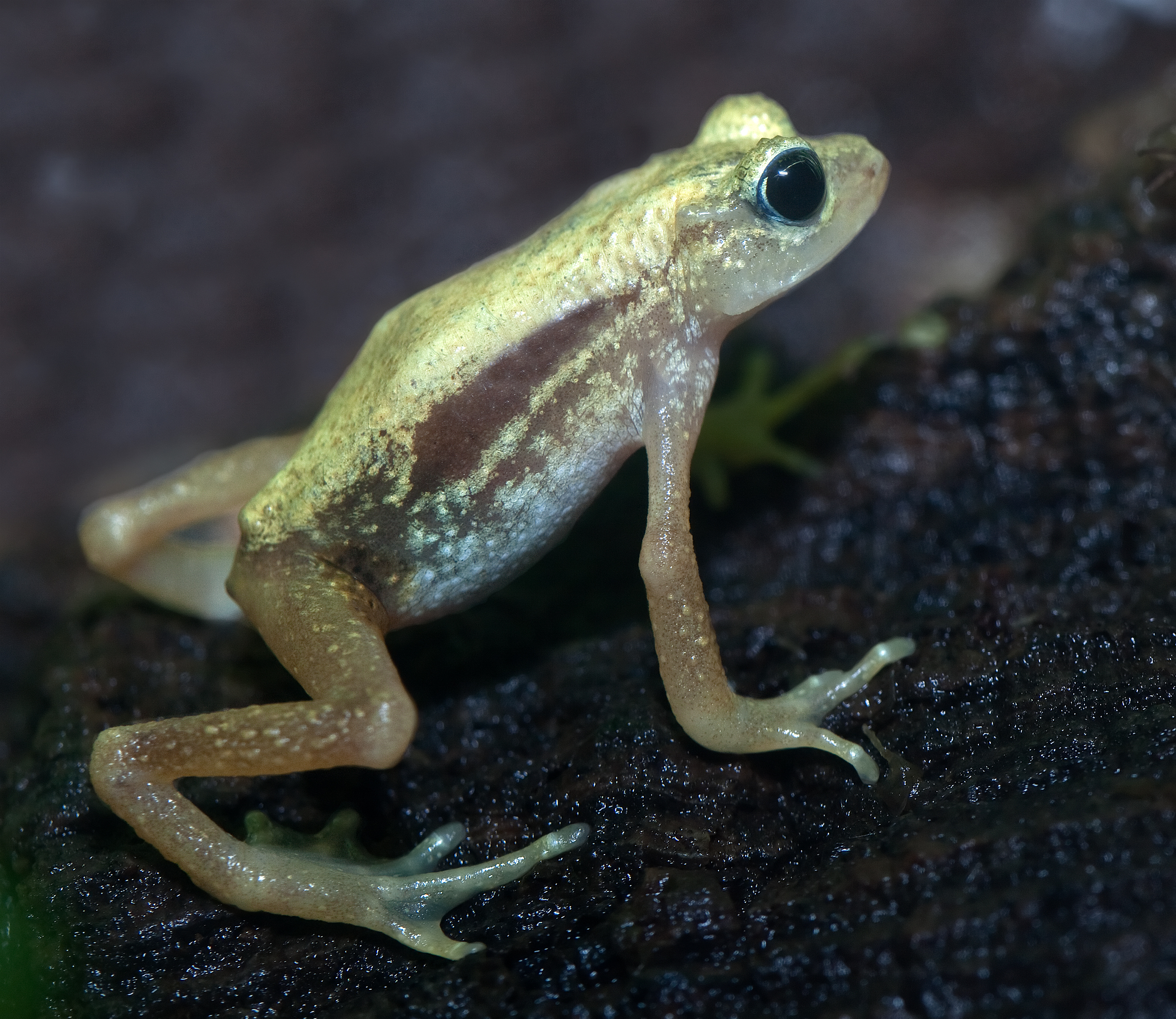Kihansi spray toad
(Nectophrynoides asperginis)

Description
The Kihansi spray toad (Nectophrynoides asperginis) is a small toad endemic to Tanzania. The species is live-bearing and insectivorous. The Kihansi spray toad is currently categorized as "Extinct in the wild" by the International Union for Conservation of Nature (IUCN), though the species persists in ex situ, captive breeding populations. The Kihansi spray toad is a small, sexually dimorphic anuran, with females reaching up to 2.9 cm (1.1 in) long and males up to 1.9 cm (0.75 in). The toads display yellow skin coloration with brownish dorsolateral striping. They have webbed toes on their hind legs, but lack expanded toe tips. They lack external ears, but do possess normal anuran inner ear features, with the exception of tympanic membranes and air-filled middle ear cavities. Females are often duller in coloration, and males normally have more significant markings Additionally, males exhibit dark inguinal patches on their sides where their hind legs meet their abdomens. Abdominal skin is translucent, and developing offspring can often be seen in the bellies of gravid females. The toad breeds by using internal fertilization, in which females retain larvae internally in the oviduct until their offspring are born. Prior to its extirpation, the Kihansi spray toad was endemic only to a two-hectare (5-acre) area at the base of the Kihansi River waterfall in the Udzungwa escarpment of the Eastern Arc Mountains in Tanzania. The Kihansi Gorge is about 4 km (2.5 mi) long with a north–south orientation. A number of wetlands made up the habitat of this species, all fed by spray from the Kihansi River waterfall. These wetlands were characterized by dense, grassy vegetation including Panicum grasses, Selaginella kraussiana moss, and snail ferns (Tectaria gemmifera). Areas within the spray zones of the waterfall experienced near-constant temperatures and 100% humidity. Currently, an artificial gravity-fed sprinkler system is in place to mimic the original conditions of the spray zones. The species' global range covered an area of less than two hectares around the Kihansi Falls, and no additional populations have been located after searching for it around other waterfalls on the escarpment of the Udzungwa Mountains. Prior to extinction, there was a population of around 17,000 individuals and fluctuating naturally.
Taxonomic tree:







